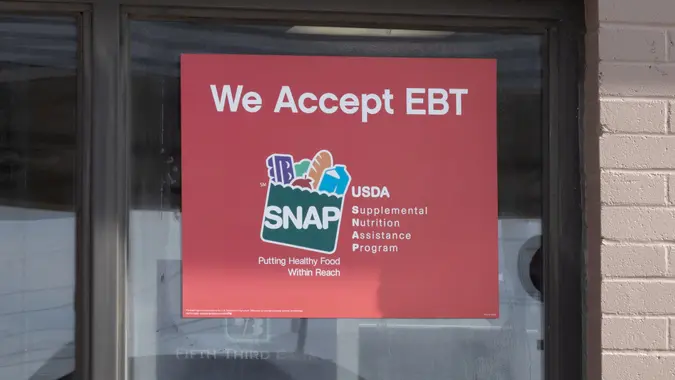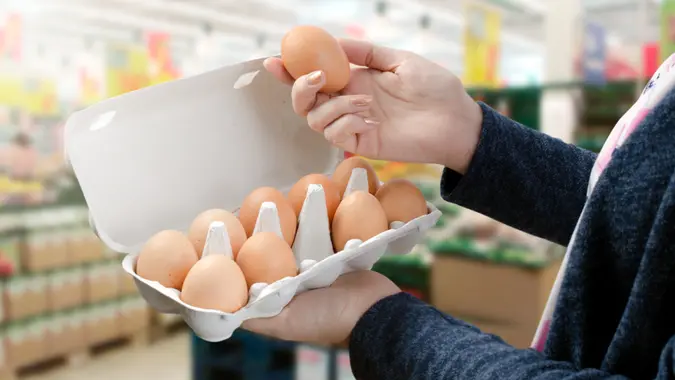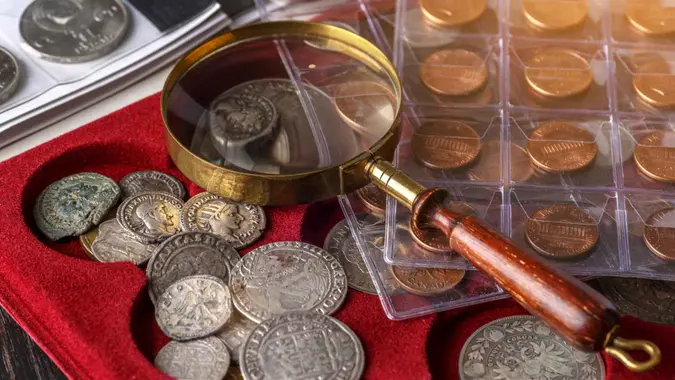I’m a Gen Xer: Here’s How I’m Living Frugally in 2025

Commitment to Our Readers
GOBankingRates' editorial team is committed to bringing you unbiased reviews and information. We use data-driven methodologies to evaluate financial products and services - our reviews and ratings are not influenced by advertisers. You can read more about our editorial guidelines and our products and services review methodology.

20 Years
Helping You Live Richer

Reviewed
by Experts

Trusted by
Millions of Readers
Members of Generation X, born between 1965 and 1980, have seen their share of economic ups and downs and learned to adapt.
As 2025 creeps ever closer, economic indicators are mixed about what people can expect. On the one hand, inflation and energy prices are going down, but with a new president set to take office in January, no one can perfectly predict how the economy will respond.
Gen Xer Mireya Vela, age 51, a special needs teacher and artist in Los Angeles, is worried about the high cost of living in her state of California. She’s keenly aware of the disparities that exist around her — while she and her family live in an “up and coming” part of Los Angeles, she said that less than a mile away there’s “extreme poverty.”
As someone who grew up poor, Vela plans to go into 2025 focusing on the following time-tested frugal habits to keep her on track, no matter what comes.
Reusing
Frugality for Vela means “making do with a lot of what you already have.” This looks like reusing things around her rather than going out to buy everything brand new, and also buying secondhand as much as possible.
Thrifting Clothing
One area where Vela has really changed her habits over the years, which she plans to keep up in 2025 and beyond, is buying thrifted clothing.
Dressing fashionably has always been important to Vela. While there have been years she bought new clothes from medium- to high-end clothing shops, like Banana Republic or J.Crew, she found that over time, she didn’t like the wasteful nature of not wearing everything she bought.
“I like to be pretty current in the way that I dress,” she said, “so I just started thrifting everything.” She added a caveat that the only exception is for undergarments and socks, which she buys new.
She also thrifts shoes, including running shoes, so long as they’re supportive enough. She even turned her teenage daughter and husband onto the habit.
Reducing Waste and Donating
As someone who grew up “with a scarcity mindset,” waste of any kind bothers Vela. From food to clothing, she prioritizes reuse whenever possible. While she did try to resell her own clothing in the past, she’s found that to be too much work and now just donates it to charities in need. “If I don’t get something out of it, then at least somebody else will,” she said.
Buying Secondhand Furniture
Several important pieces of furniture in Vela’s house, including a table in her entryway and her bedroom furniture, were all thrifted or secondhand purchased at below market rates. Not only does she appreciate the uniqueness of these pieces, she loves the quality.
“If you try to get a nice piece of furniture, a lot of the times what you end up finding is that the wood isn’t high quality and the manufacturing is maybe a little shoddy. I look at things like that. And so if you look at older pieces, there seems to have been more care put into the construction and the materials that they use are a lot better.”
Reducing Spending
One of Vela’s longtime frugal habits is that she tends to “hoard money.” She described herself as “not a really big spender,” adding, “I’m not the person that’s going to go out and get coffee every single day. That’s just not the way I do things.”
This puts her and her family in a good position to save money during lean times. “We are not the family that is going to buy a new car every two to five years. I really like to use what I have.”
Thrifting Art Supplies
As a visual artist, for whom the cost of supplies can mount easily, she said, “Nobody talks about how much it costs to be an artist. It’s just really hard.” Vela hits up a consignment art center called Scraps every time she’s in San Francisco.
“Everybody just takes their magazines and their paint brushes and so on there. If you’re an artist and you need supplies, that’s the kind of place where you want to go,” she shared.
Seeking Donations for the Classroom
Vela has learned to cope with the fact that schools never seem to scrape up enough money for the supplies that teachers need to be successful at their jobs. She has used numerous sites that allow people to donate to an individual teacher’s classroom, and will do so again if needed.
Shopping at the Mexican Grocery
Vela, who likes to cook, has found that the Mexican grocery store in her neighborhood is more affordable than the big-box grocery stores, even for organic foods.
With a frugal mindset, Vela and her family will be able to weather whatever economic changes 2025 may bring.
More From GOBankingRates
- Nearly 1 in 3 Americans Hit by a Costly Holiday Scam, Norton Survey Shows -- How To Avoid This
- Here's What Retirees Wasted the Most Money On in 2025 -- and How To Avoid It in 2026
- How Middle-Class Earners Are Quietly Becoming Millionaires -- and How You Can, Too
- 6 Safe Accounts Proven to Grow Your Money Up to 13x Faster
 Written by
Written by  Edited by
Edited by 

























